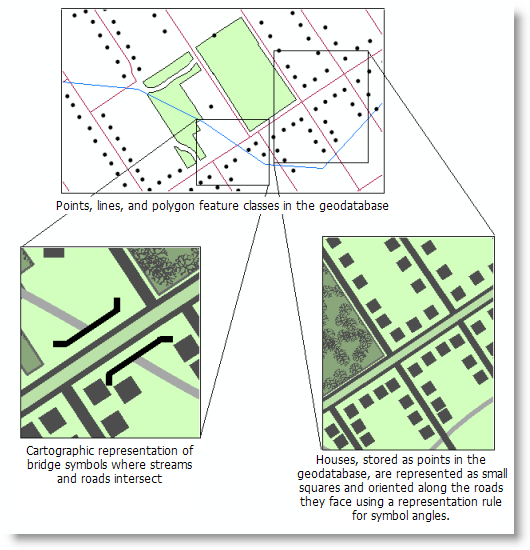Using map layers in ArcMap allows you to assign symbols and labels to the underlying feature geometry. Yet sometimes, you'll need additional control over how to portray cartographic depictions in your map. Often, you'll need the freedom to use a depiction that employs map representations that differ from your GIS feature geometries.
One of the mechanisms that can be used to portray features using map layers in ArcMap is to use cartographic representations. A cartographic representation is a set of symbols, rules, overrides, and graphic edits that allow you to represent features cartographically without having to modify the underlying feature geometry.

In the example above, you can see the geographic features for roads and how their cartographic representations in the map differ from the GIS feature geometry. Cartographic representations provide more control and precision, as well as more freedom, for how features are portrayed on the map. At the simplest level, cartographic representations add advanced drawing options for map layers. In addition, these representation rules and overrides are saved with the individual features in the geodatabase for sharing and reuse.
See What are representations?for more information.